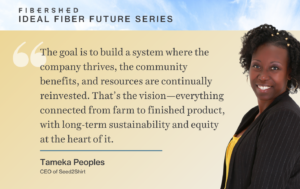Educational Curricula
These curricula for children support an understanding of place, through the intersection of restoration education and material culture. We explore the concepts of having human needs met while caring for the natural systems on which we depend.
Restoration Dye Gardens
Teaching Ecological Literacy to Grades 1-5
by Rebecca R. Burgess
Eight lessons in biological diversity, resource management, native wisdom, and natural dyeing.
Free downloadable PDF: Restoration Dye Garden Curriculum
The practice of restoration education utilizes hands-on trainings to teach adults and children that a sustainable material culture can be created while simultaneously restoring the earth’s ecosystems.
Native plant restoration is successfully done by the hands of children—the process gives them an opportunity to dig into the macro-environmental issues of our day, by creating solutions within their own landscape.
These native plantings develop and grow, and become the foundation for natural resources that can be made into useful materials for the study of art, science, history and mathematics. Natural dye harvesting takes place in the second year of the plant’s maturity, depending upon the growth rate of the species.
The creation of natural color goes hand-in-hand with conservation of habitat, the creation of topsoil, and the increase of biodiversity. Through this full cycle of designing, planting, observing, harvesting, and manipulating—students become aware and are exposed to a process with a life-cycle that is regenerative vs. degenerative.
Carbon Cycle Curriculum
by Rebecca Burgess
Free downloadable PDF: Carbon Cycle Curriculum
The lessons in this study guide are designed to connect student’s personal physical energy to its original source—the sun—and carry that connection into a deeper understanding of human material culture. Two foundational natural processes—photosynthesis and the carbon cycle—are responsible for all life on earth.
The first of these processes—photosynthesis—allows plants to be ‘fed by sunlight’ as they convert photons (light energy), into chemical energy (sugars). The energy provided through photosynthesis is what drives the earth’s carbon cycle, whereby carbon dioxide from the earth’s atmosphere is ‘inhaled’ by plants and transformed (with the addition of water) into carbohydrates.
Our biosphere (the place where we humans exist, between sky and soil, including all living and dead organisms not yet converted into soil organic matter) is one of earth’s carbon pools, where carbon exists in the form of carbohydrates. We generally think about carbohydrates as something we eat, but they also create very beneficial sources for fiber and fuel.
Modern society has become increasingly dependent upon a more ancient and less renewable form of carbon—fossil carbon, which comes from our deepest carbon pool—our lithosphere. This source of carbon is often burned and refined to create gasoline for our cars, plastic for our clothes, dyes, bottles, bags, and thousands of other objects we humans use. Fossil carbon is part of the earth’s storage system, and can be likened to a bank account that we humans are on our way to depleting, at the cost of our climate.
Helping students become familiar with the fundamental cycles (first two lessons) and then giving them the opportunity to chart their own material culture (third lesson) in relation to the ‘fresh carbon’ concept is a crucial step towards developing an ecologically literate generation, capable of addressing the fundamental shifts we must make from a fossil fuel based culture, and into a biosphere based one.
These lessons are designed to meet strategic developmental goals for children ages six through eight, as well as meeting current California state educational standards, including those put forth by the most recent Education for the Environment Initiative. These lessons also meet the U.S. Partnership for Education for Sustainable Development standards, put forth by a collaboration between the United States and the United Nations.
Natural Dye Investigation
by Katherine Jolda
Downloadable PDF of curriculum: natural-dye-investigation
Downloadable PDF of plant photos: dye-plant-photos
Target Grade: Science 7-8
Time required: 4 class periods of 50 minutes each, with homework, or 5 class periods with no homework
Summary: In this lesson, students will apply Science Fundamentals to a natural dye investigation. Students will investigate the color properties of several whole plants native to and landscaped in the Bay Area. Students will be grouped into teams of 3-5. Each team will use one plant and the recommended procedure, and follow the Scientific Method for their research. Team reports on each plant will be written and illustrated, resulting in a class set. This lesson has procedures for eight plants. This lesson may be conducted outside (propane or gas stoves) or inside (electric hot plates and good ventilation).
Photos by Paige Green



